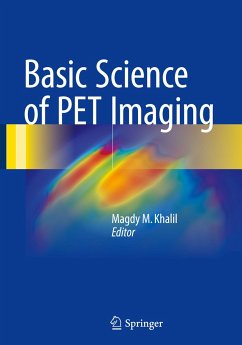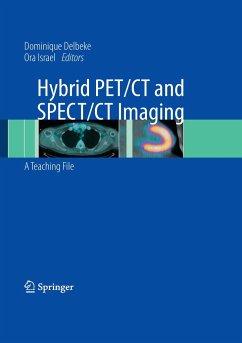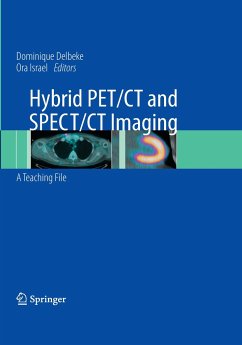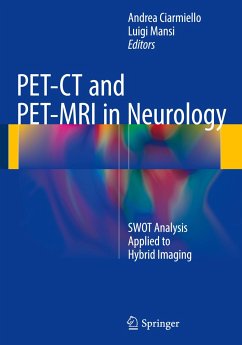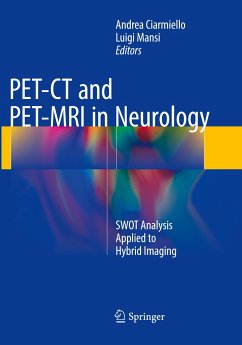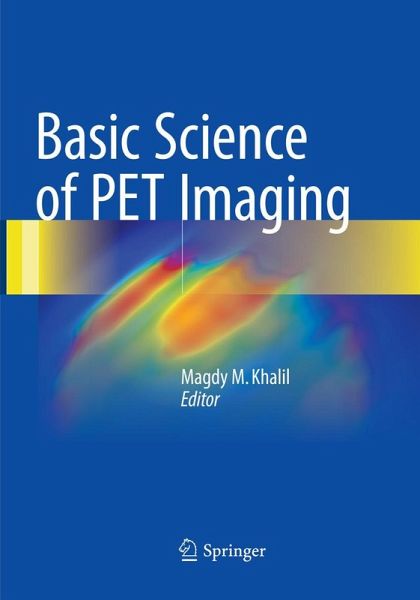
Basic Science of PET Imaging
Versandkostenfrei!
Versandfertig in 6-10 Tagen
100,99 €
inkl. MwSt.

PAYBACK Punkte
50 °P sammeln!
This book offers a wide-ranging and up-to-date overview of the basic science underlying PET and its preclinical and clinical applications in modern medicine. In addition, it provides the reader with a sound understanding of the scientific principles and use of PET in routine practice and biomedical imaging research. The opening sections address the fundamental physics, radiation safety, CT scanning dosimetry, and dosimetry of PET radiotracers, chemistry and regulation of PET radiopharmaceuticals, with information on labeling strategies, tracer quality control, and regulation of radiopharmaceut...
This book offers a wide-ranging and up-to-date overview of the basic science underlying PET and
its preclinical and clinical applications in modern medicine. In addition, it provides the reader with a sound understanding of the scientific principles and use of PET in routine practice and biomedical imaging research. The opening sections address the fundamental physics, radiation safety, CT scanning dosimetry, and dosimetry of PET radiotracers, chemistry and regulation of PET radiopharmaceuticals, with information on labeling strategies, tracer quality control, and regulation of radiopharmaceutical production in Europe and the United States. PET physics and instrumentation are then discussed, covering the basic principles of PET and PET scanning systems, hybrid PET/CT and PET/MR imaging, system calibration, acceptance testing, and quality control. Subsequent sections focus on image reconstruction, processing, and quantitation in PET and hybrid PET and on imaging artifacts and correction techniques, with particular attention to partial volume correction and motion artifacts. The book closes by examining clinical applications of PET and hybrid PET and their physiological and/or molecular basis in conjunction with technical foundations in the disciplines of oncology, cardiology and neurology, PET in pediatric malignancy and its role in radiotherapy treatment planning. Basic Science of PET Imaging will meet the needs of nuclear medicine practitioners, other radiology specialists, and trainees in these fields.
its preclinical and clinical applications in modern medicine. In addition, it provides the reader with a sound understanding of the scientific principles and use of PET in routine practice and biomedical imaging research. The opening sections address the fundamental physics, radiation safety, CT scanning dosimetry, and dosimetry of PET radiotracers, chemistry and regulation of PET radiopharmaceuticals, with information on labeling strategies, tracer quality control, and regulation of radiopharmaceutical production in Europe and the United States. PET physics and instrumentation are then discussed, covering the basic principles of PET and PET scanning systems, hybrid PET/CT and PET/MR imaging, system calibration, acceptance testing, and quality control. Subsequent sections focus on image reconstruction, processing, and quantitation in PET and hybrid PET and on imaging artifacts and correction techniques, with particular attention to partial volume correction and motion artifacts. The book closes by examining clinical applications of PET and hybrid PET and their physiological and/or molecular basis in conjunction with technical foundations in the disciplines of oncology, cardiology and neurology, PET in pediatric malignancy and its role in radiotherapy treatment planning. Basic Science of PET Imaging will meet the needs of nuclear medicine practitioners, other radiology specialists, and trainees in these fields.



